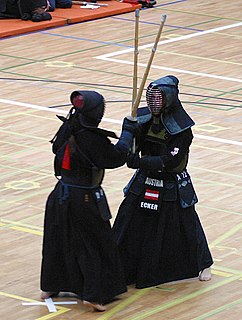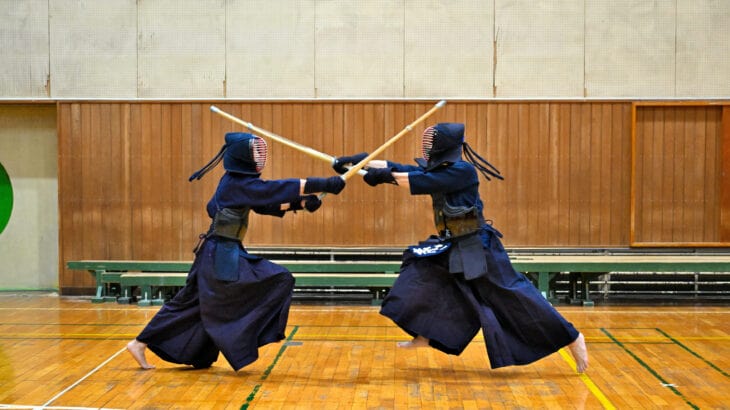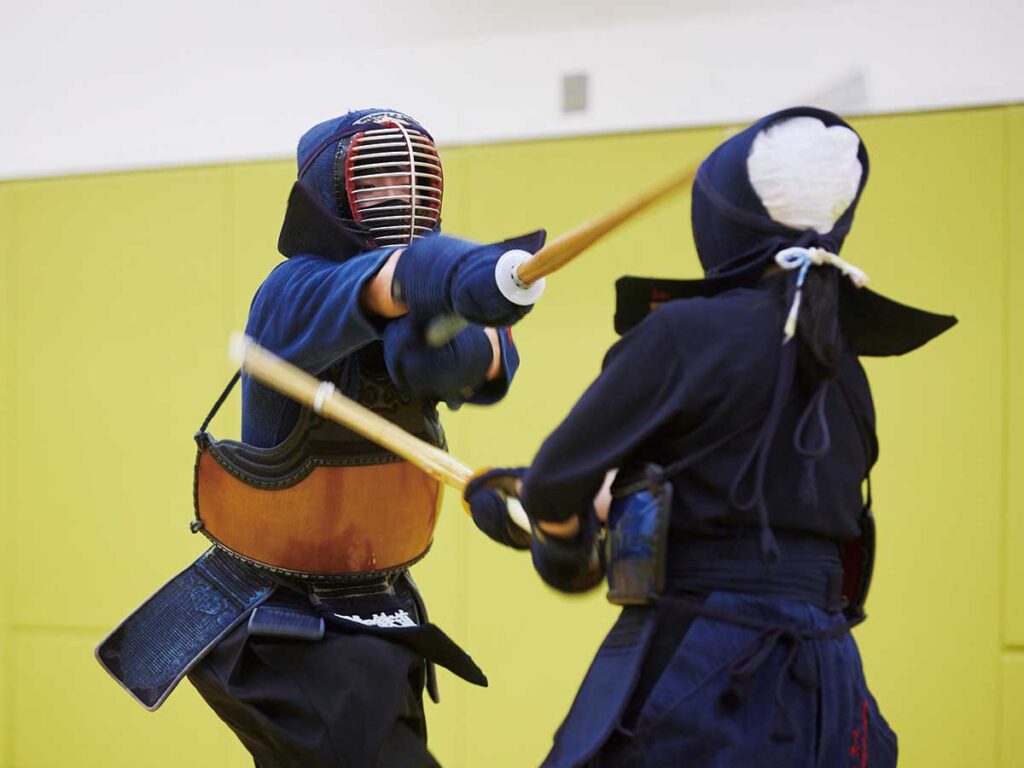
Kendo is a traditional Japanese martial art, and its rules are strictly set to ensure the safety and fairness of practice and competition.
This article provides a detailed overview of the rules of kendo and delves into the match rules, evaluation criteria, and point system of competitive kendo.
We provide a guide to deepen your understanding of the rules of Kendo for all readers interested in Kendo, from beginners to experienced players.
This will strengthen not only your Kendo techniques, but also your knowledge of the strategies and rules of the match.
目次
Basics of Kendo match rules
Kendo matches are among the most respected martial arts sports around the world due to their unique rules and etiquette.
In this article, we will explain in detail the basic rules of kendo matches, such as the structure and time of matches, for those who are learning about them for the first time.
Understanding the rules of a Kendo match is essential to enjoying the match more deeply, and it also directly leads to improving your skills as a Kendo player.
Basics of Kendo match rules
Kendo matches are conducted based on specific rules and protocols.
Here we will explain the basic components of the match.
Match structure
Kendo matches are usually best of three.
This is a format in which a player wins by taking two of the first three shots.
This rule is in place to ensure matches are decided clearly and quickly.
The best-of-three system allows for greater fairness and competitiveness because a player is not immediately declared a winner just because he or she gains a temporary advantage; stable ability and technique are required. .
Match time
The time limit for each match is 5 minutes.
Within this time, players aim to score effective strikes against their opponents.
Time limits are set to keep the matches dynamic and easy to understand for spectators, and to take into account the physical demands on the players.
After 5 minutes, the score at that point will determine the winner.
If the scores are tied, the game may go into overtime, in which case a first-score system (sudden death) will be applied.
In this way, Kendo match rules encourage fair and tense matches, and provide an opportunity for athletes to demonstrate their skill and spirit at a high level.
Having a deep understanding of the rules of a kendo match and following them is extremely important for your growth as a kendo player.

Criteria for effective striking
In a Kendo match, the determination of effective strikes is an important element that determines the outcome of the match.
This section provides a detailed explanation of the requirements for a valid strike and the referee’s judgment criteria.
In kendo, not only technical accuracy but also the strength of strikes and use of the shinai are strictly evaluated.
Requirements for striking
In order to be certified as a valid datsutu, three basic requirements must be met:
- Strength : A strike requires not only the ability to simply touch the target, but also the strength to have a decisive impact on the opponent. A powerful strike must be clearly felt not only by the referee but also by the audience.
- Accurate striking position : In Kendo, the striking position is strictly defined, and it is necessary to strike the exact area of the head, men, torso, or kote (wrist). Strikes to areas other than these areas are not considered effective.
- Correct use of the Shinai : The angle of the Shinai, the way you hold it, and the entire movement leading up to the strike must be appropriate. Technical execution according to the correct Kendo form is essential.
referee’s decision
A valid strike will be confirmed by the flag being raised by the referee during the match. The referee will make a decision based on:
- Observed quality of the strike : The umpire will closely observe the moment of the strike and determine whether the above requirements are met.
- Consistency : There are usually multiple umpires in a match, and a consistent evaluation from multiple umpires is required for a valid strike to be recognized. Each umpire sees the match from a different angle, and points are awarded only if all judges agree that the strike is valid.
By understanding these criteria and practicing, you can increase your chances of success in your Kendo matches.
Meeting the requirements for effective striking not only contributes to the acquisition of technique, but also to the improvement of strategic thinking and instantaneous judgment.

foul play during the match
It is very important to follow the rules during a Kendo match.
Certain actions will be considered foul and will be strictly regulated to ensure the fairness and safety of the match.
This section details the main fouls that frequently occur during matches and the consequences for them.
In Kendo, avoiding these fouls is essential to both sportsmanship and the display of proper technique.
Main foul play
The following offenses are allowed during a Kendo match:
- Leaving the playing area (off-field) : Intentionally or excessively leaving the playing area during a match is considered a foul. This includes continuing to retreat and move out of play to avoid attacks.
- Dropping a Shinai : Dropping a Shinai during a competition is considered improper handling of equipment and will result in a penalty.
- Time Wasting : Intentionally delaying the progress of a match is considered a violation of sportsmanship.
result of foul
If foul play is confirmed, the consequences are as follows:
- Disqualification : A serious or multiple violation may result in disqualification from the match.
- Point Penalty : A point may be awarded to an opposing player for a foul. Players must always be aware of the rules, as this can greatly affect the flow of the match.
Understanding these illegal acts and their consequences during kendo matches is important in order to clarify the rules that kendo practitioners must follow when competing and to conduct fair and correct competitions.
By adhering to these rules, athletes are expected to exemplify not only technique but also the ethics and respect of Kendo.

Equipment and clothing regulations
Standards for use of bamboo swords and armor
Shinai and armor in Kendo are very important elements in ensuring the safety and fairness of the competition.
Shinai must have the appropriate length and weight according to regulations, and all Kendo players must use them in matches and practice.
Similarly, protective gear protects the head, wrists, torso, and throat, and is essential for safely practicing Kendo techniques.
Regulations for wearing gi and hakama
Kendo attire includes a gi and hakama.
These attire are designed not to interfere with Kendo movement, and also play an important role as traditional attire.
The gi is generally white, and the hakama is usually black or navy blue. Wearing the proper gi and hakama is part of kendo etiquette and is an essential element during competitions and training.
This allows you to look and behave as a swordsman and show respect to your opponent.
These standards for equipment and clothing are the basis for practicing kendo and are the rules that kendo practitioners must follow.
Choosing and wearing the appropriate equipment is an important part of shaping not only your Kendo technique, but also your mindset as a Kendo practitioner.

Match management
Referee’s role and responsibilities
Referees in kendo matches play an important role in ensuring that the match progresses fairly and making decisions based on the rules.
The referee is at the center of the match and makes the final decision. Assistant referees assist the referee and provide important information to help make quick decisions.
These roles are essential to keeping games fair and creating an environment where players can perform at their best.
Judges are required to have deep knowledge and experience in kendo in order to keep the match flowing smoothly and judge the effectiveness of techniques.
Flow of the match
A Kendo match begins with an opening ceremony. Players show respect for each other by facing each other and bowing.
The main referee signals the start of the match, and the players compete with each other to score points.
During the match, the referee observes the players’ movements from an appropriate distance and position to determine effective strikes.
The match ends when the time has elapsed or a certain number of points have been scored, and the match is closed again with courtesy.
This maintains respect among the players and enhances the spirit of Kendo.

Due to the effects of the new coronavirus, temporary special rules have been established for Kendo matches.
These rules are designed with the safety of players and spectators as a top priority, and specifically to avoid close contact.
In order to maintain face-to-face distance during matches, certain restrictions have been placed on how techniques are performed, and it is recommended that they be performed at a greater distance than usual.
Umpires are also required to maintain distance from players and wear masks when necessary.
Match safety measures and changes
New measures have also been introduced in match management to protect the health of players and officials.
For example, temperature checks will be taken at the entrance to the stadium, hands will be disinfected, and equipment will be thoroughly disinfected by taking longer periods of time between games.
Additionally, the number of spectators is limited and social distancing measures are in place to ensure overall safety.
These measures are temporary until the pandemic subsides and are expected to be updated as the situation changes.

International Kendo rules and their application
Application of rules for international kendo matches
The rules established by the International Kendo Federation are important for maintaining uniformity and fairness in international competitions.
These rules allow athletes coming from different countries and regions to compete to the same standards.
In international matches, referee decisions are made according to a clear and detailed rulebook so that they can be understood across national language and cultural differences.
Judgment criteria for referees, match procedures, and standards for equipment used are unified according to international standards, ensuring that all participants can compete in a fair environment.
Characteristics of rules for international matches
The International Kendo Rules aim to provide an international standard of understanding and practice while respecting the Kendo culture of participating countries.
For example, international rules strictly stipulate things such as the exchange of bows during a match, the distance between face-to-face meetings, and effective strikes during matches.
Match formats and time limits have also been adjusted based on international standards to allow players to showcase different technical styles fairly.
At international matches, these rules must be clearly communicated to players, referees, and spectators, and properly enforced.
This will help unite the international kendo community and improve techniques.



